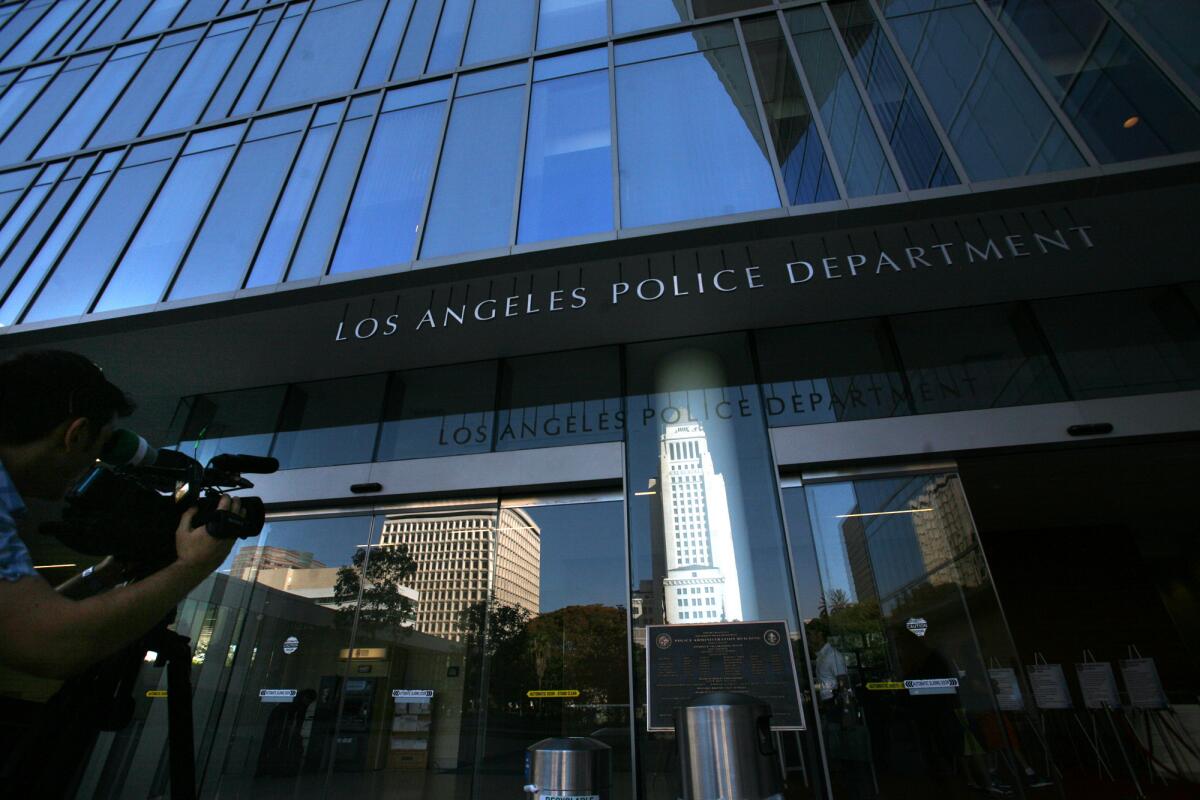Commission criticizes ‘high-risk’ plan to catch suspect, but says LAPD shooting justified

- Share via
A team of Los Angeles police officers crafted a poor plan to catch a homicide suspect but were justified in shooting him after he drew a gun during a foot pursuit in October, the city’s civilian Police Commission has ruled.
By a 4-0 vote Tuesday, the panel formally disapproved of the tactics deployed by a captain, a detective and an officer involved in the incident, in which Lazzeri Frazier Jr., 21, was shot and killed. The panel also ordered additional tactical training for three detectives, two officers and a sergeant.
However, based on a report on the incident presented to them by LAPD Chief Michel Moore, the panel found the drawing of weapons by three detectives and two officers and the fatal shooting of Frazier by a detective were all within department policy.
According to the chief’s report, police had identified Frazier as a suspect in a homicide and in the robbery of a liquor store, each in Van Nuys. After locating Frazier at his apartment, commanders placed officers outside to wait for Frazier to leave his home, then call in backup to apprehend him on the street — in part to avoid a barricade situation in his apartment.
Instead, after leaving his home, Frazier spotted the police and took off running, resulting in a chase and, ultimately, Frazier’s death on a neighborhood sidewalk from police gunfire. The report found Frazier had raised his gun in the direction of police, leading a detective to open fire with a shotgun.
Although determining the shooting was within policy, much of what led up to it deviated from established protocols for planning for the apprehension of a homicide suspect who is believed to be armed and dangerous, the chief’s report found. Altogether, it was a “high-risk” plan, it found.
“The Operational Plan did not outline clear tactical strategies for surveillance, containment, and apprehension which [led] to a lack of coordination between the involved [Gang and Narcotics Division] personnel and patrol officers,” the report found.
The report noted that a Use of Force Review Board that had also reviewed the incident found the operational plan was “wholly inadequate,” leaving officers poorly staged and ill informed as to the specifics of the plan.
The board found the plan “failed to utilize additional available patrol resources to maintain a perimeter,” and that “a lack of communication and coordination led to confusion, including when and where Frazier Jr. was preferred to be stopped, as well as which personnel would be part of the arrest team.”
More to Read
Sign up for Essential California
The most important California stories and recommendations in your inbox every morning.
You may occasionally receive promotional content from the Los Angeles Times.














